6 min read
Among our species’ admirable characteristics is our combination of insatiable curiosity and tireless ingenuity. We undertake grand adventures to learn more about the cosmos. We are explorers!
We are also visual creatures. Much of the way we experience the universe is through our sight. For that reason, pictures are among the most widely appreciated products of space missions.
The ambitious and exciting Dawn mission, launched in September 2007, is one of NASA’s most remarkable ventures into the solar system. The spacecraft completed a spectacular exploration of the giant protoplanet Vesta in 2011-2012, showing it to be more closely related to the terrestrial planets (including Earth) than to typical asteroids. The probe arrived in orbit around Ceres in March of this year following a journey of 7.5 years and around 5 billion kilometres.
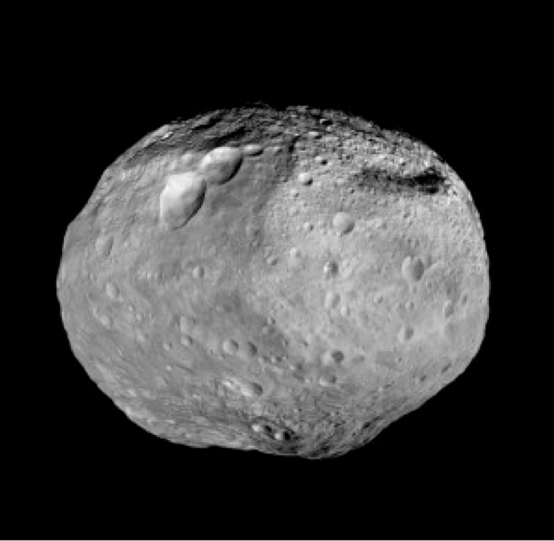
Vesta and Ceres were among the last uncharted worlds in the inner solar system prior to Dawn. They are the two most massive residents of the main asteroid belt, that vast collection of bodies between Mars and Jupiter. The alien landscapes Dawn reveals provide humankind with a new perspective on the solar system. Remnants from the time that planets were formed, Ceres and Vesta hold clues that will help scientists understand the dawn of the solar system.
Ceres is so large that it is included in the category of dwarf planets, along with Pluto. Indeed, having been discovered 129 years before Pluto, Ceres is the first dwarf planet known, and the first to be explored. Scientists have good reason to believe that this world is composed largely of rock and ice, and it may even harbor reservoirs of liquid water deep underground.
For more than two centuries, Ceres had been observed as little more than a faint smudge of light amidst the stars. Now that Dawn has come to Ceres, we are just beginning to develop a portrait of this exotic orb. Over the course of the next year, we will collect a rich bounty of precious pictures and other data.
Thanks to is uniquely capable ion propulsion system, Dawn is the only spacecraft ever to have orbited an object in the main asteroid belt and, even more remarkably, the only spacecraft ever to orbit two extraterrestrial destinations. It is truly an interplanetary spaceship.
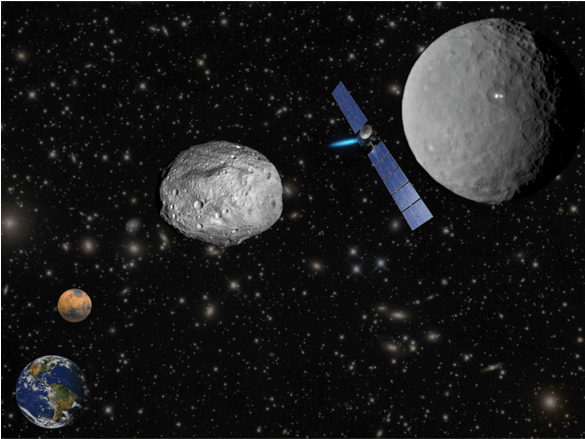
Dawn studies its targets using a suite of sophisticated sensors, most of which rely on measurements of light in one form or another, including very short wavelength gamma rays, long wavelength infrared, and the same range of wavelengths our eyes register, which we therefore call visible light.
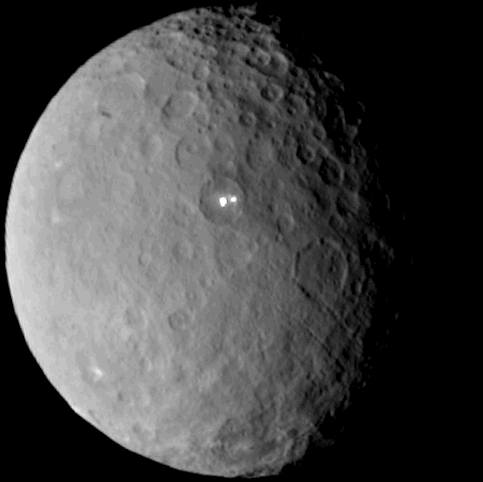
Among its first sights on Ceres were spots of bright light. There are several, but two very near each other in a crater are particularly salient. It is impossible not to be mesmerized by what appear to be glowing beacons, shining out from the unfamiliar lands ahead. They draw us forth, spellbound. Their brilliant glow illuminates the way for a bold ship from Earth sailing on the celestial seas to a mysterious, uncharted port. The entrancing lights fire our imagination and remind us of the irresistible lure of exploration and the powerful anticipation of an adventure into the unknown.
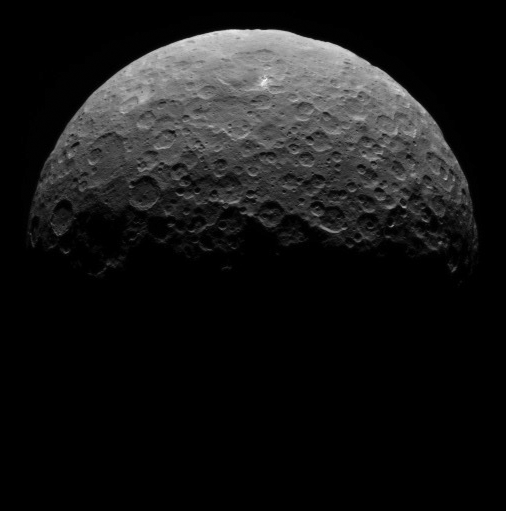
It certainly does not require sophisticated scientific insight to be captivated by them. What are they? At this point, the clearest answer is that the answer is unknown. One of the great rewards of exploring the cosmos is uncovering new questions, and this one captures the imagination of everyone who gazes at the pictures sent back from deep space.
There are many intriguing ideas about their nature and composition, but we need more data, and Dawn will take photos and myriad other measurements to enlighten us as it spirals closer and closer during the year. For now, we simply know too little.
In the meantime, there is much speculation. At one extreme, some people ask if those spots might be lights from an alien city. Of course, that’s ridiculous! At this early stage, how could Dawn determine what kinds of groupings Cereans live in? Do they even have cities? For all we know, they may live only in rural communities, or perhaps they only have large states.
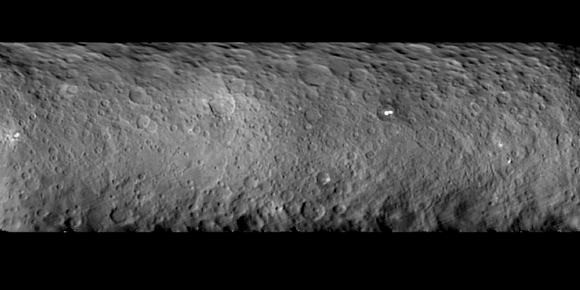
We do know that most of Ceres’ surface reflects nine percent of the sunlight that falls upon it. (For comparison, the moon reflects 12 percent on average, although as many Earthlings have noticed, there is some variation from place to place. Mars reflects 17 percent, and Vesta reflects 42 percent. Many photos seem to show that my forehead reflects nearly 100 percent, as does Saturn’s moon Enceladus.) But there are some small areas that are significantly more reflective, including the two most famous bright spots. Each spot occupies only one pixel (2.1 kilometers across) in the best pictures so far. If the brightest area on the ground is the size of a pixel, then it reflects around 40 percent of the light, providing the stark contrast with the much darker surroundings. When Dawn’s pictures show more detail, it could be that the spots will turn out to be even smaller and even more reflective than they have appeared so far. In the next pictures of these spots, to be taken in the first week of May, each pixel will cover 1.3 kilometers.
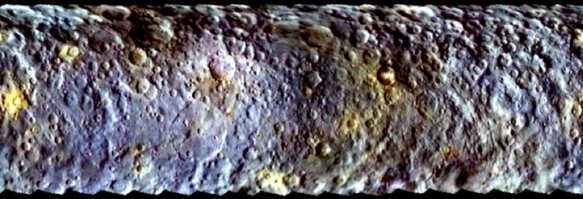
For now, however, we wait and contemplate the light. What are those bright spots? We don’t know. It makes you want to send a spacecraft there to find out, and by golly that is what we are doing!
What wonderful mystery this is! I hope you will follow as we gain a new understanding in the light of Dawn.

Marc D. Rayman is the Dawn chief engineer and mission director at JPL. A lifelong space enthusiast, he began writing to NASA when he was nine years old, and joined JPL after receiving his Ph.D. in physics a few years later. He has worked on a wide variety of astrophysics and planetary missions but, of course, nothing else as cool as Dawn. He enjoys sharing the thrill of exploration and the rewards of scientific insight with the public.







